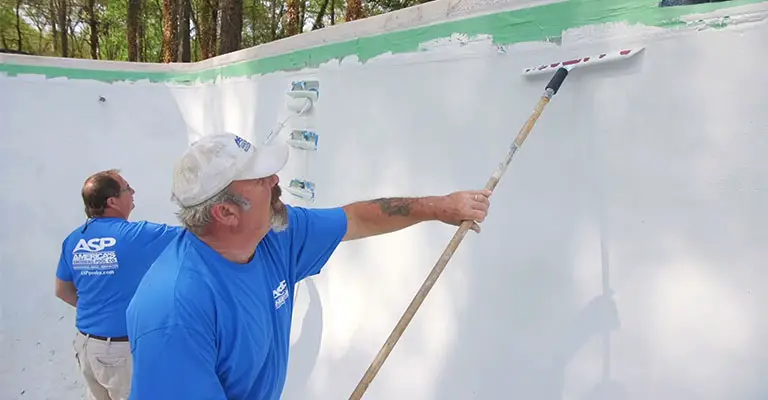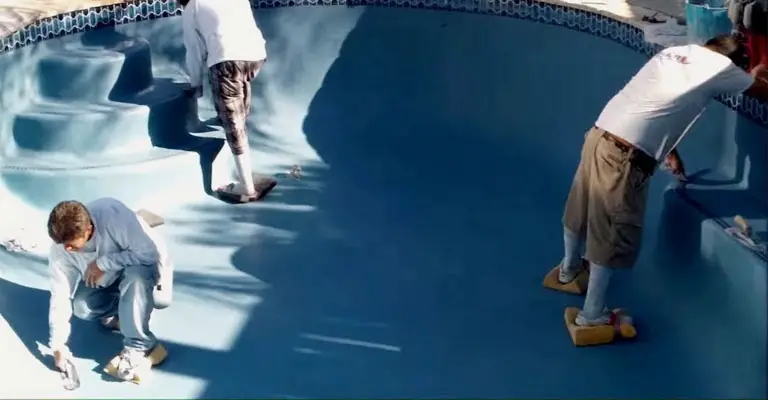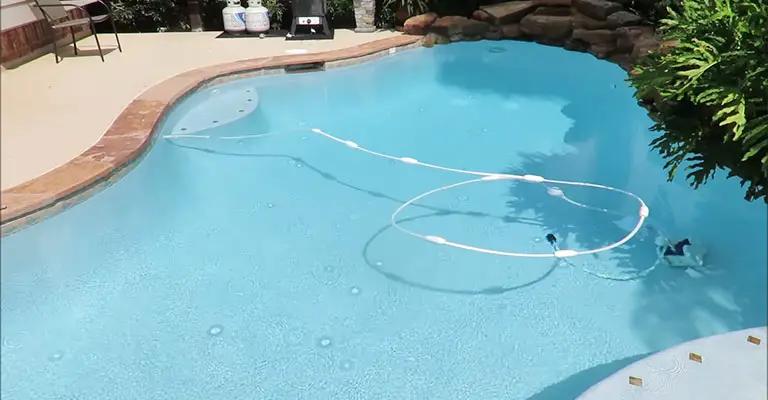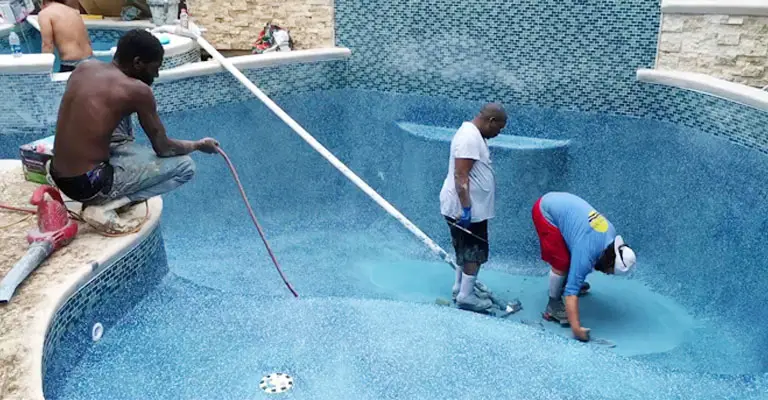It’s important to have good weather when replastering a pool. It’s okay to plaster your pool any time of year, but the ideal weather is when it’s a little cold and humid.
Spring and fall are generally the best times to replaster your pool, at least in the United States. Due to high temperatures, the plaster can dry out before filling completely, leaving cracks between dry and wet areas.
Some homeowners do this during summer or just before pool season, so they don’t have to worry about rain.
In summer, however, the weather is too hot and dry for pool replastering. Usually, you would replaster a pool every 5 to 7 years, depending on the pool’s condition.
How Long Do Pool Plasters Last?

The type of plaster determines the duration of pool plaster and the extent of the repairs required. The plaster of your pool can last between seven and ten years, depending on a variety of factors and how well you maintain it.
Pool plaster can last up to 10 years depending on its type, whether it needs repair, and how bad that damage is. Cleaning and maintaining a plastered pool regularly can significantly extend its lifespan.
You can expect pool plaster, such as marcite plaster, to last for at least seven to ten years when cared for properly. If you use a quartz aggregate blend for pool plastering, you’ll extend the life of your pool by five years.
How Can I Extend The Life Of My Plaster?

Most people are aware that the life of your pool plaster depends on the materials used and how well your pool is maintained.
Many people might not know that your pool plaster also depends on the chemicals in your pool. Maintaining a balanced chemical balance can help keep your plasters beautiful for a long time.
The pool is a reflection of one’s personality. From the soothing colors to the unique design, this space should be a place to relax and enjoy.
The chemicals and pH levels in your pool dictate how clean your water will be and how long it will last.
The first thing you should do is maintain the chemical balance of your pool. A pH level between 7.4 and 7.6 is recommended for swimming pools. Anything lower will cause the plaster to crack.
You should also not ignore any cracks that occur in your plaster. Instead, have it checked quickly by a professional. Preventing significant problems early on will save you money and prevent you from incurring high costs.
What Is The Best Time Of The Year To Replaster A Pool?

There are many reasons why you might need to replaster your pool. In any case, timing is a critical consideration when replastering your pool.
For example, a reasonable temperature range instead of a particular time of year is typically a better choice since temperatures across the country vary so much.
The best time to plaster your pool is when it’s a little cold and humid, which usually happens in the fall or spring. Fall and Spring are ideal because they’re not too hot or too dry.
Plastering your pool can be done almost any time of year, but the best temperature is when it is a little chilly and humid. The worst time of the year is during the summer season.
This is because of the high temperatures; the plaster can dry before fully filling, leaving cracks between it and the wet foam.
For most pools, a temperature of 50 to 75 degrees Fahrenheit with moderate humidity is ideal for replastering. But crews are more than capable of working outside of those temperatures.
Some southern areas of the U.S. experience these temperatures throughout winter, while others experience them in the spring or fall.
The plastering process cannot be done when it is much colder than 50 degrees Fahrenheit, although we will work when the temperature dips down into the 40s.
The newly applied plaster may dry too quickly and develop tiny cracks if the weather is too hot or dry. Furthermore, a strong wind can cause dust and debris to blow into the wet plaster and cause it to get stuck.
It may be too windy for pool replastering in some areas during certain months of the year that are ideal temperature-wise.
It is difficult to predict with certainty when it is best to replaster a pool because of these factors. An expert will be able to recommend a time based on the circumstances.
Is It Safe To Use The Pool Right After Plastering It?

There is a lot of debate on how long you should wait before using the pool after plastering. Some say that you should wait 7 to 10 days; others say that it’s fine to use the pool after the plaster dries out.
The plaster used for pools works differently from ordinary plaster, which must be completely dried before it can be used. Once the plaster has dried, the pool must be filled with water.
Plaster, when submerged in water, dries within 7-10 days. However, this does not mean you need to wait that long. You can swim in the pool once it has been filled and cleaned.
How Replastering Is Done
Depending on the size and complexity of your pool, replastering can last anywhere from a few days to several weeks. First, the old plaster has to be removed, and then the new plaster is applied.
After the freshly poured plaster has dried and hardened, it is ready for painting. In order for the plaster to shine to its fullest, rough surfaces are smoothed out, and finishing touches are applied. The pool still needs to be refilled after this process.
When You Should Not Replaster
Plastering is not recommended during windy or rainy days. There might be times when the local water table is higher than normal during periods of daily rain.
This can increase the chance of a gunite plaster floating or water seeping through it during plastering.
However, the water table can be controlled so that the pool doesn’t float, and that water won’t leak into the area between the plaster and concrete beneath.
Final Words
Replastering your pool is a big investment, and it’s important to know when you need to do it. You should have a professional come in and assess the condition of your pool before you make any decisions about whether or not it needs replastering.






